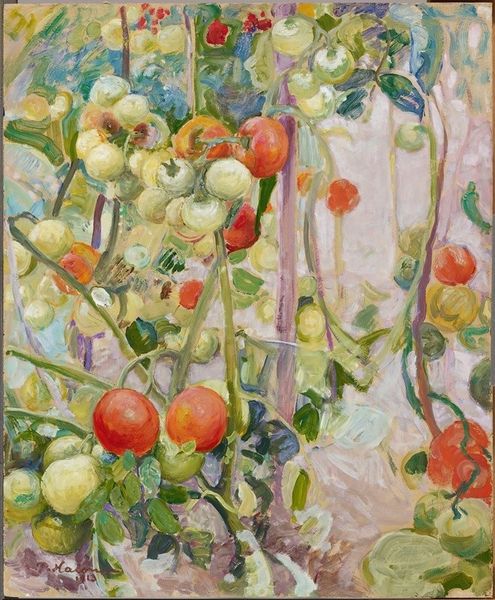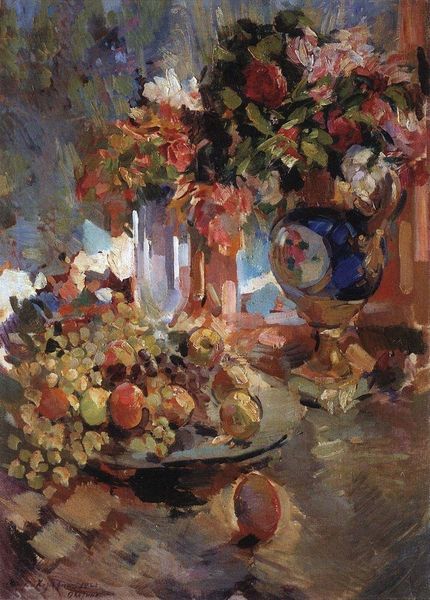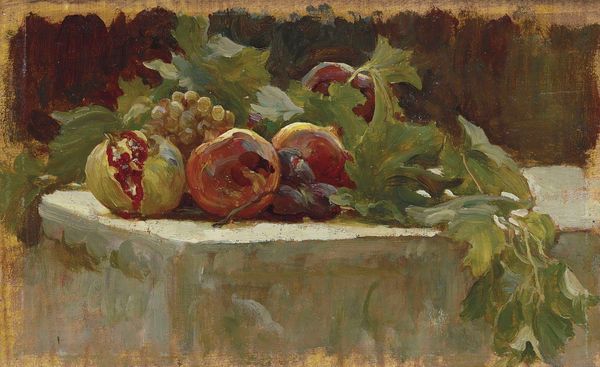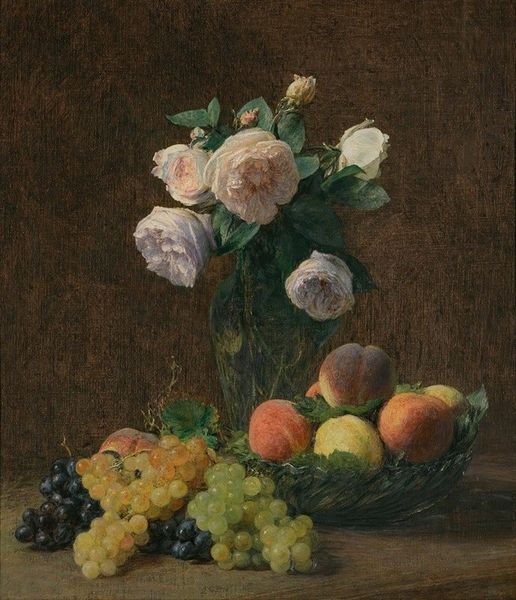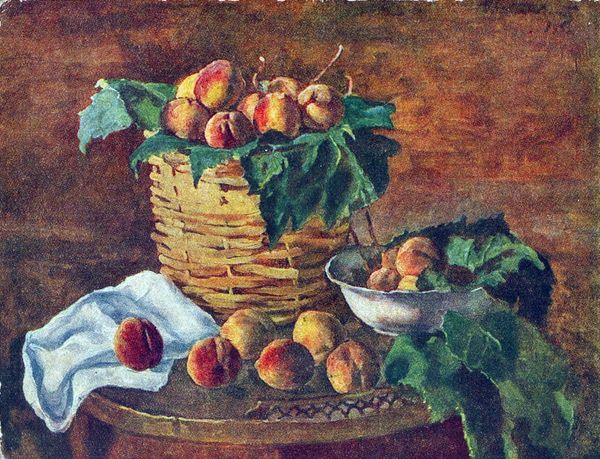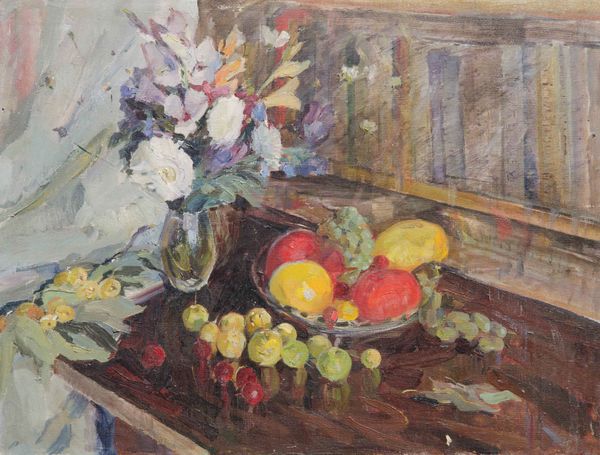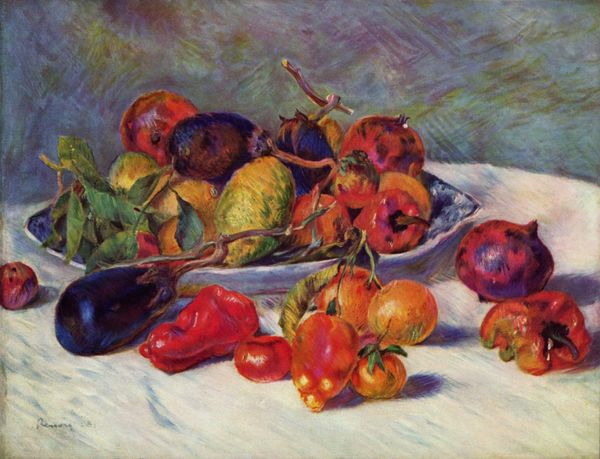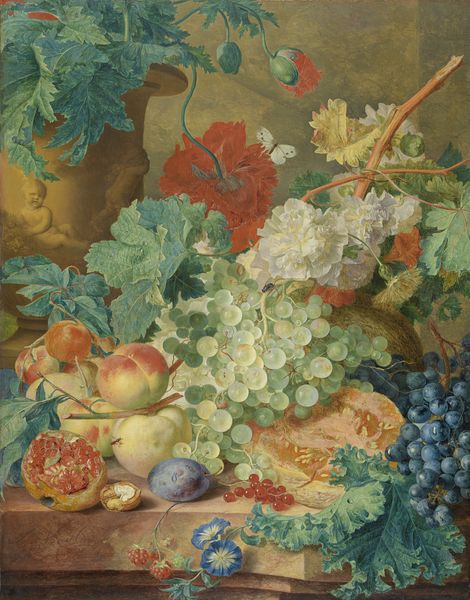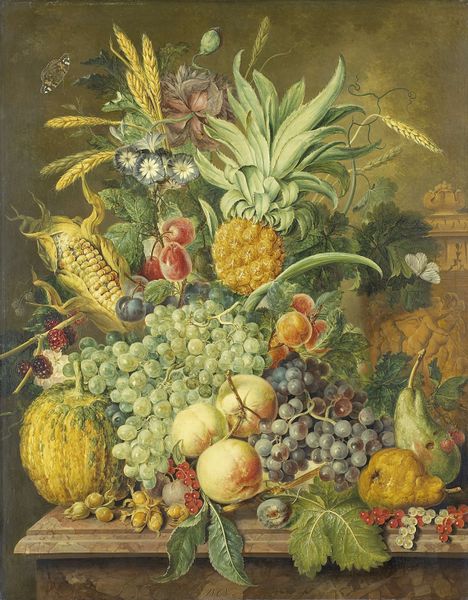
Copyright: Public Domain: Artvee
Curator: Standing before us is Konstantin Alexeevich Korovin's "Still Life With Fruit," painted in 1927. A vivid composition executed with oil on canvas. Editor: Immediately, it strikes me as a symphony of ripeness teetering on the edge of decay—there's something deeply evocative in the color palette. The browns and the reds suggesting an ending as well as a beginning. Curator: Indeed. Notice how Korovin orchestrates a balance between representation and abstraction. While recognizable, the fruit forms melt into one another through impasto brushstrokes and blurred edges. It transcends mere visual replication. Editor: Absolutely, those thick, textured strokes... they give the painting such a tactile presence. It almost feels like you could reach out and feel the skins of the fruit and leaves. And, to be frank, the energy of it all! Curator: Speaking of energy, observe how the artist deftly manages to depict both form and light using tonal variations and chromatic intensity. Note the way Korovin renders light on the grapes; it evokes a sense of tangible three-dimensionality. Editor: You know, it's almost as if the canvas becomes another part of the still life itself. Those daubs of greens and blues among the fruit make you imagine being there, picking it yourself. The way he’s applied the paint isn’t just representational; it feels emotional, almost indulgent. Curator: The painting can also be appreciated as an investigation into visual sensation. Through the orchestration of line, color and texture, Korovin engages the viewer, not just intellectually but sensorially. The surface becomes activated as light changes across the room. Editor: Right, it becomes its own reality, doesn’t it? Like, that basket of grapes, pomegranates and pears—the real subject of the work is so much bigger than just the object being presented. Korovin isn’t showing you fruit. He’s conveying the ephemerality of experience. Curator: Yes, an interesting observation. This work, through its formal arrangement, acts as a reminder of our relationship with visual culture and the world around us. Editor: Couldn’t agree more. It feels like an embrace of both beauty and impermanence. It invites a viewer to just dwell in the gorgeous here and now.
Comments
No comments
Be the first to comment and join the conversation on the ultimate creative platform.
